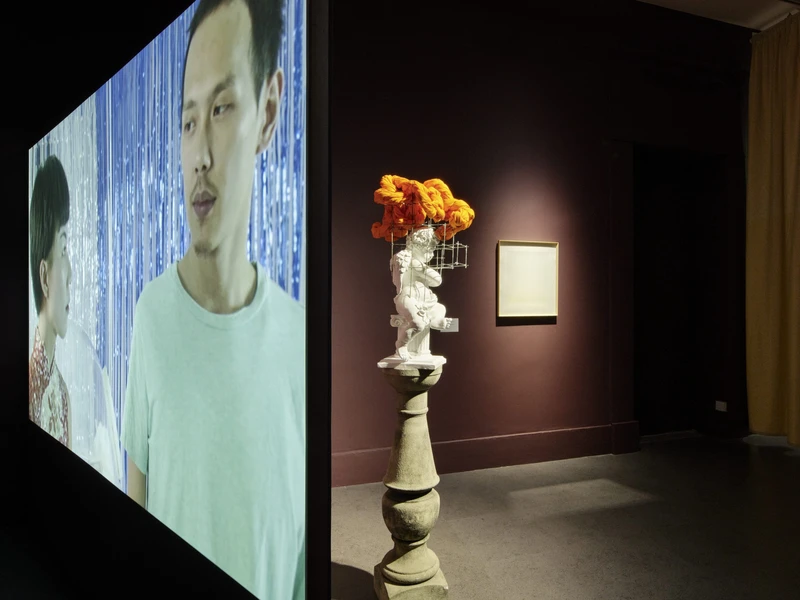The Narrow Gate of the Here-and-Now
30 Jul 2021-8 Jan 2023


The Narrow Gate of the Here-and-Now traces urgent themes across the 30-year period as they impact the personal, the political and the planetary, and prompts thinking about the effects of globalisation today in the Irish context as we respond to global crises from COVID-19 to Climate Change and the Black Lives Matter movement. The exhibition will explore ideas of bodily autonomy, conflict and protest, the Anthropocene era, and digital technologies, through the rich holdings of the IMMA Collection and Archive which represent a diverse history of artistic responses to these themes.
The first Chapter, Queer Embodiment, maps the context for the project, reflecting on the dramatic legislative changes that occurred in Irish society such as the decriminalisation of homosexuality (1993), provision of divorce (1996), marriage equality (2015) and the repeal of the Eighth Amendment (2018). These moments in the struggle for human rights find echoes across the globe, as grassroots movements continue to contest the impact of the State on the Body.
The Museum’s Collection and Archive reflects a strong history of feminist practice, relaying the defiance of women in Ireland against church and state oppression; as well as queer histories that capture moments of resistance and joy, as well as presenting the devastating effects of HIV/AIDS. While many of these changes have built a more compassionate society, some of the artists in this exhibition engage with troubling issues, such as Irish citizenship and migration, which remain unresolved.
Queer Embodiment is organised in sections: the first, explores themes of mourning, HIV/AIDS, bodily autonomy and domestic violence. The second shows how artists, particularly female and queer artists, articulate resistant forms of identity representation that counter prevailing beliefs. The third considers the idea of home as it is articulated through ideas of the national, post-colonial, traveller, migrant and refugee experiences. The final section presents viewpoints from artists who embody hopeful visions of recuperation, and the future.